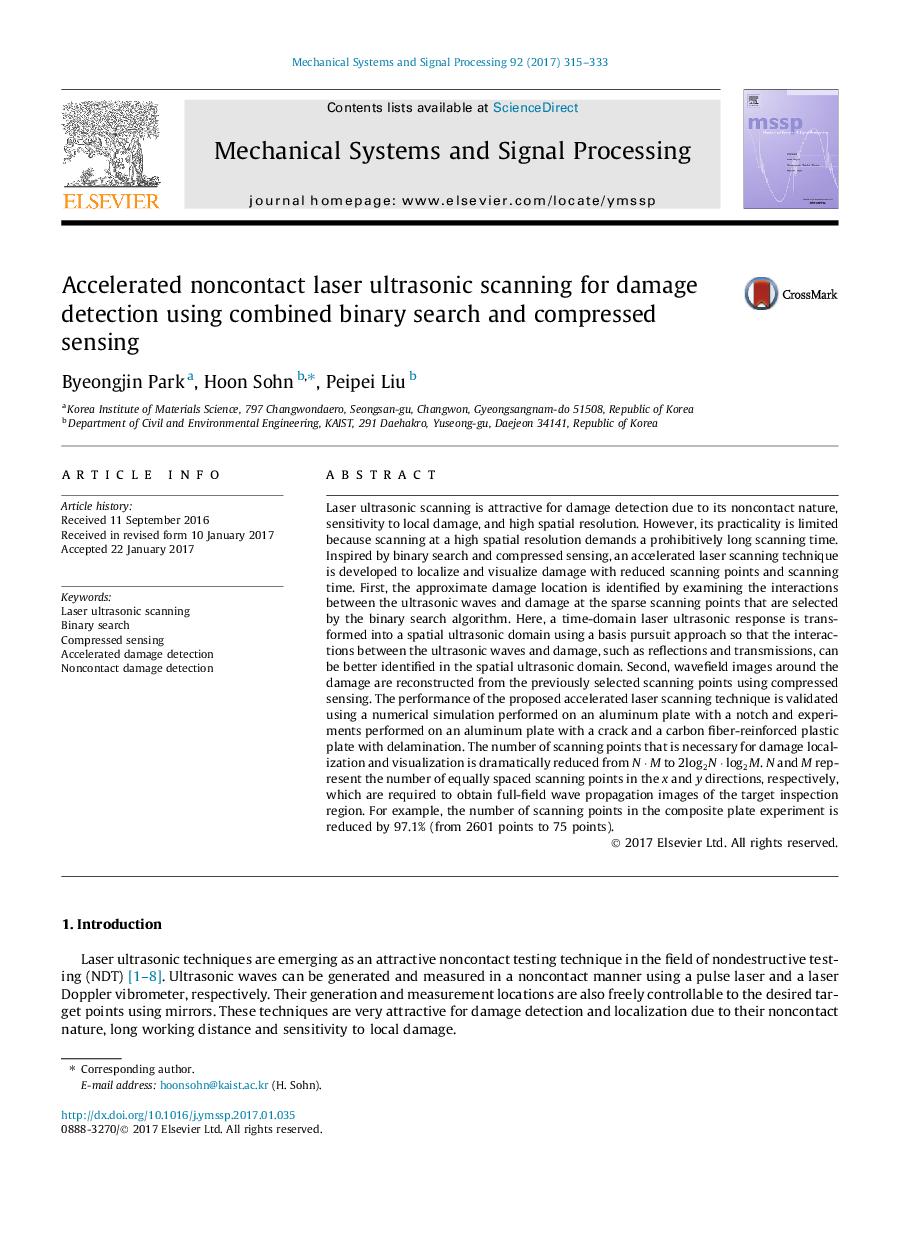| کد مقاله | کد نشریه | سال انتشار | مقاله انگلیسی | نسخه تمام متن |
|---|---|---|---|---|
| 4976843 | 1451843 | 2017 | 19 صفحه PDF | دانلود رایگان |
عنوان انگلیسی مقاله ISI
Accelerated noncontact laser ultrasonic scanning for damage detection using combined binary search and compressed sensing
ترجمه فارسی عنوان
اسکن سونوگرافی لیزر بدون تماس سریع برای تشخیص آسیب با استفاده از جستجوی باینری ترکیبی و سنجش فشرده
دانلود مقاله + سفارش ترجمه
دانلود مقاله ISI انگلیسی
رایگان برای ایرانیان
کلمات کلیدی
اسکن اولتراسونیک لیزر، جستجوی باینری، سنجش فشرده، تشخیص شتاب سریع شناسایی آسیب غیرقانونی،
موضوعات مرتبط
مهندسی و علوم پایه
مهندسی کامپیوتر
پردازش سیگنال
چکیده انگلیسی
Laser ultrasonic scanning is attractive for damage detection due to its noncontact nature, sensitivity to local damage, and high spatial resolution. However, its practicality is limited because scanning at a high spatial resolution demands a prohibitively long scanning time. Inspired by binary search and compressed sensing, an accelerated laser scanning technique is developed to localize and visualize damage with reduced scanning points and scanning time. First, the approximate damage location is identified by examining the interactions between the ultrasonic waves and damage at the sparse scanning points that are selected by the binary search algorithm. Here, a time-domain laser ultrasonic response is transformed into a spatial ultrasonic domain using a basis pursuit approach so that the interactions between the ultrasonic waves and damage, such as reflections and transmissions, can be better identified in the spatial ultrasonic domain. Second, wavefield images around the damage are reconstructed from the previously selected scanning points using compressed sensing. The performance of the proposed accelerated laser scanning technique is validated using a numerical simulation performed on an aluminum plate with a notch and experiments performed on an aluminum plate with a crack and a carbon fiber-reinforced plastic plate with delamination. The number of scanning points that is necessary for damage localization and visualization is dramatically reduced from N·M to 2log2N·log2M. N and M represent the number of equally spaced scanning points in the x and y directions, respectively, which are required to obtain full-field wave propagation images of the target inspection region. For example, the number of scanning points in the composite plate experiment is reduced by 97.1% (from 2601 points to 75 points).
ناشر
Database: Elsevier - ScienceDirect (ساینس دایرکت)
Journal: Mechanical Systems and Signal Processing - Volume 92, August 2017, Pages 315-333
Journal: Mechanical Systems and Signal Processing - Volume 92, August 2017, Pages 315-333
نویسندگان
Byeongjin Park, Hoon Sohn, Peipei Liu,
